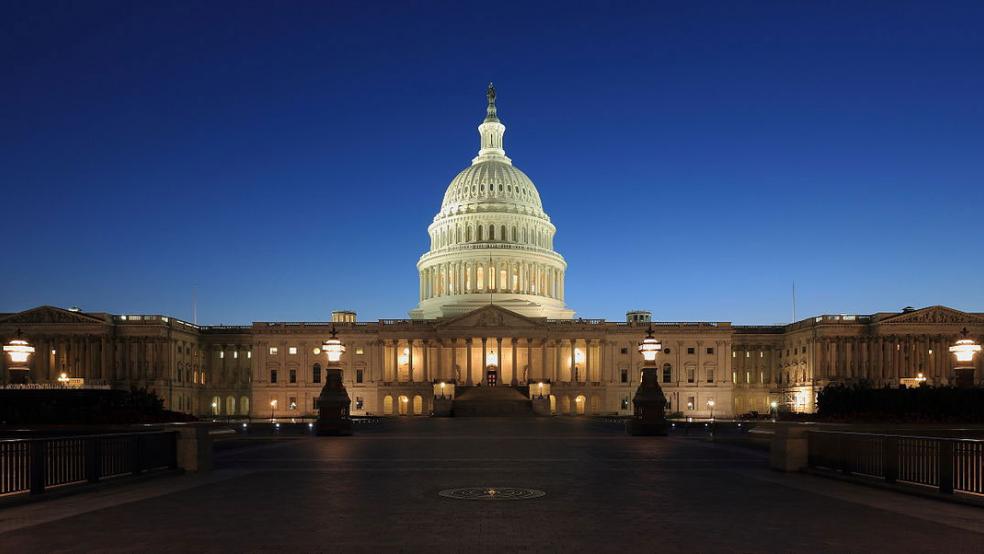In 2010, as congressional Democrats moved to enact Obamacare, Sen. Orrin Hatch echoed fellow Republicans in denouncing "trillion-dollar deficits as far as the eye can see."
In fact, the record trillion-dollar deficit former President Barack Obama inherited was falling even then as the economy recovered from recession and financial crisis. By the time Obama left office last January, it dropped by two-thirds as a share of the U.S. economy.
But now the Utah senator's prophecy is coming true. With a boost from tax cuts he helped his party push through Congress, the U.S. government indeed faces uninterrupted trillion-dollar deficits once the effects kick in during the next fiscal year.
The largest reason is America's aging population. Over the next decade, the number of Americans drawing Social Security and Medicare benefits is projected to rise from 45 million to 60 million.
In June, the Congressional Budget Office forecast that would push the deficit back over the trillion-dollar mark in the 2022 fiscal year, during the next presidential term. Yet now the government is on track for that to happen before President Donald Trump completes his third year of this term.
That dubious achievement stems from three factors.
The first is the structural 2019 deficit that CBO estimated at $689 billion before major Trump administration policy changes.
The second is the spending agreement Republicans and Democrats expect to reach next month to avert a potential government shutdown. That agreement, raising current spending caps for both defense and domestic programs, would add roughly $100 billion in 2019 spending.
The third is revenue loss from the new tax cut. The Congressional Joint Committee on Taxation forecasts, after accounting for faster economic growth, a loss of $245 billion.
That signals a 2019 deficit of $1.034 trillion, not counting new relief funds for recent natural disasters. Similar dynamics would keep annual deficits above $1 trillion through at least 2027, even if Congress allows the new individual tax cuts to expire as scheduled after 2025.
As a share of the growing economy, that would fall far below the 9.8 percent level deficits reached during the worst of the recession. Government had no trouble financing those deficits with inexpensive borrowing then, and there's no sign of trouble now.
Yet higher deficits pose some risks.
They make it harder for government to resolve long-term solvency problems when the last baby boom retirements leave 77 million on Social Security and Medicare in 2033.
They reduce government's flexibility to respond with fiscal stimulus when the long-running economic expansion turns into the next recession. They may even hasten the point at which that happens.
"There's a danger the seeds of the next recession are built into the tax bill," says William Hoagland, a longtime Senate Republican budget aide now at the Bipartisan Policy Center.
By heaping stimulus onto conditions of steady growth and low unemployment, he reasons, the tax cut could overheat the economy. That, in turn, could lead new Federal Reserve chairman Jerome Powell to raise interest rates faster than expected, triggering a downturn.
And if deficit headlines damage the investor confidence now buoying stock markets, there's little Washington is likely to do about it anytime soon.
The forthcoming budget deal would foreclose cuts in annually approved spending. The White House, in fact, wants more money for new infrastructure spending.
Administration officials have signaled their plan will call for $200 billion in government money to stimulate much larger infrastructure investments by business. But Democrats consider that amount too small and geared toward private profit, while Republicans won't be eager to send deficits still higher.
House Speaker Paul Ryan speaks of curbing major, automatically approved entitlement programs, the largest of which are Medicare, Medicaid and Social Security. But Senate Majority Leader Mitch McConnell disclaims interest.
Trump promises unspecified "welfare reform." But with Republican poll numbers sagging before midterm elections, slashing food stamps and other benefits for the poor would add new perils after tax cuts that deliver disproportionate benefits to businesses and the wealthy.
"A year of stalemate," Hoagland predicts.
Trump, Ryan and McConnell, who huddle in a few days to plot next moves, insist the tax cuts will spark more deficit-reducing growth than mainstream forecasters expect. That may be the best they can hope for in 2018.
This article appeared originally on CNBC. Read more from CNBC:
* This one weird trick lets blue states avoid Trump’s tax hike
* The 'single most important' trade in 2018 could be a tug of war between the Fed and the market
* Coming to a mall near you in 2018: Craft brewers, children's theaters and gyms




